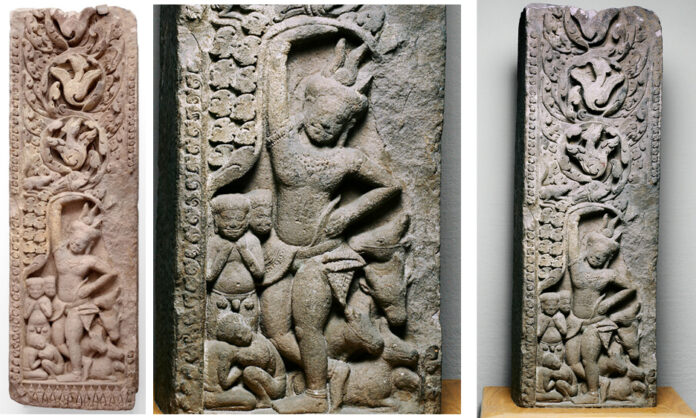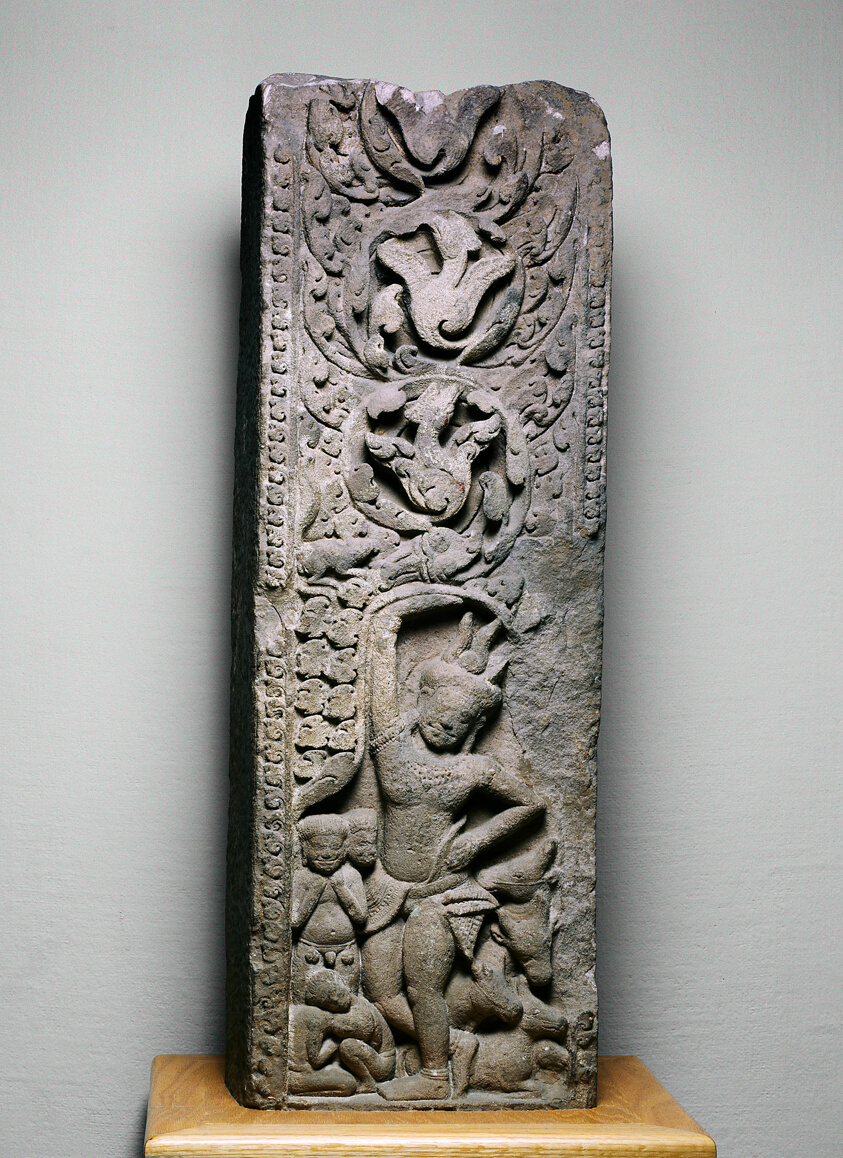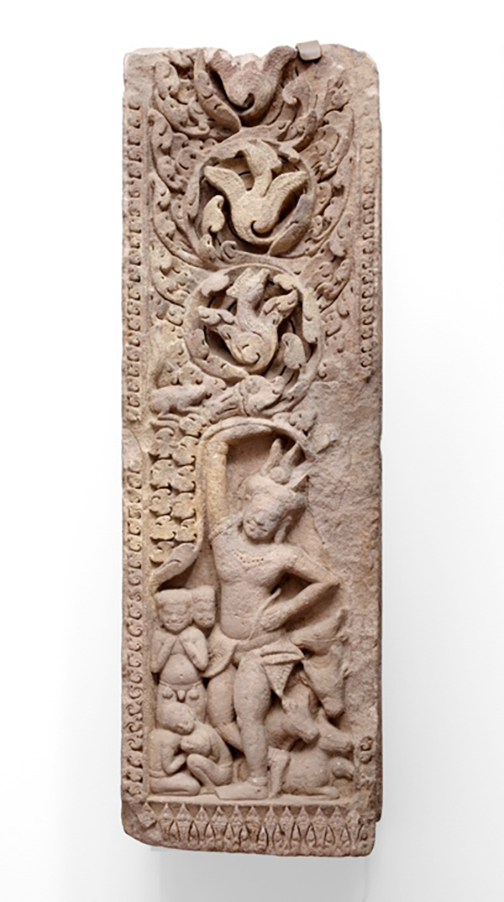
BANGKOK — The Thai government has received the good news on June 18, from the Art Institute of Chicago in the United States, that it will return one ancient artifact of the Phanom Rung temple in Buriram Province, to the Fine Arts Department of Thailand.
The artifact is a “Fragment of a Pilaster with Krishna lifting Mount Govardhana,” which is an architectural component of a stone castle dating back to around the 17th Buddhist century, or approximately 900 years ago.

Panombut Chanthrachot, the Director-General of the Fine Arts Department, said that he has informed the Minister of Culture, Sudawan Wangsupakitkoson, about this good news. She believes that although the artifact is not on the list of Thai ancient objects being tracked in foreign countries, the offer to return it by the Art Institute of Chicago is a delightful matter. Thailand will receive an important ancient object back, which can be used to complete the missing parts of ancient sites, making them more complete.
“On behalf of the Ministry of Culture of Thailand, I would like to express my appreciation and gratitude to the Art Institute of Chicago for recognizing the ethics of possessing ancient objects with proper origins and the good relationship between Thailand and the United States, especially for giving importance to combating the illegal trade of ancient objects.”

Mr. Panombut also said that the return of this ancient object is an important step in extending the cooperation between the two countries, and we hope that this will inspire cooperation that will further promote the exchange of knowledge and cultural collaboration.
“This act serves as a model for ethical collecting practices and strengthens the bonds of cultural respect and collaboration between Thailand and the Art Institute of Chicago,” said Mr. Phnombootra Chandrajoti, Director-General of the Fine Arts Department. “This valuable artifact is from one of the most significant archeological sites in Thailand and we are glad it is returning to its motherland,” he said.
According to the press release of the Art Institute of Chicago, the museum is committed to ongoing provenance research of this collection, and after conducting new research on this object, the museum proactively reached out to the Thai government to initiate the process to return it.
The object is a 12th-century fragment of a pilaster, which is a rectangular architectural column in the side of a doorframe. The pilaster was previously attributed to Cambodia, and new research identified that it originated at the Phanom Rung temple in northeast Thailand, a temple that the museum had previously returned an object to in the 1980s.

With the confirmation of the pilaster’s origins, the museum reached out to the government of Thailand to share these new findings; this collaboration has led to today’s return.
“We are grateful for our close collaboration with the Fine Arts Department in Thailand and are honored to take this step in what I hope is a long and productive partnership,” said James Rondeau, President and Eloise W. Martin Director of the Art Institute of Chicago. “We are deeply committed to fostering an ongoing relationship and continuing to learn from each other.”
The Phanom Rung temple is the place of origin of another object—known as the Vishnu lintel—that was previously in the museum’s collection and that was returned to Thailand in 1988. Since that time, the lintel has been restored to the structure; it is the Art Institute’s hope that the pilaster fragment is able to be restored to the same temple and these objects can be reunited.
On May 21 this year, Thailand’s National Museum received two ancient statues that were illegally trafficked from Thailand by a British collector of antiquities. The statues, a tall bronze figure called the Standing Shiva or Golden Boy and a smaller sculpture called Kneeling Female, are thought to be around 1,000 years old and were returned from the collection of New York’s Metropolitan Museum of Art.
______
Related articles:
















































